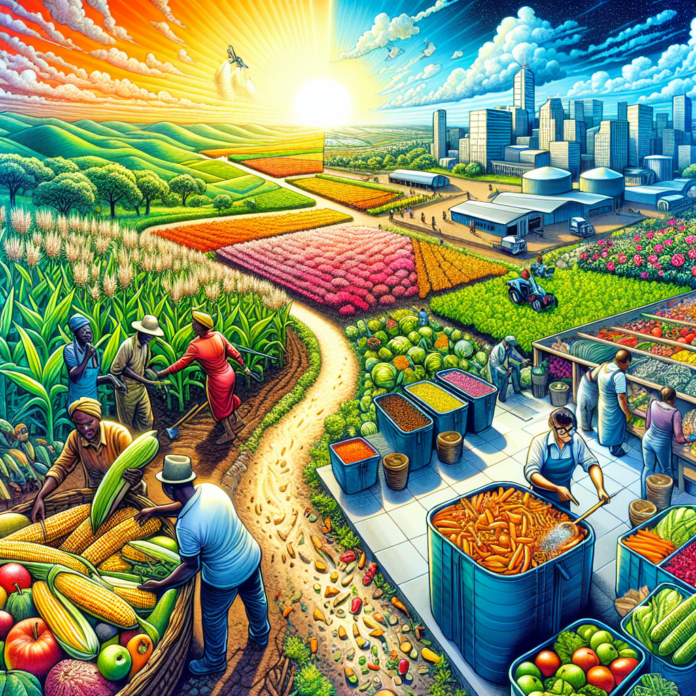Addressing Food Waste in Zimbabwe’s Supply Chain
From Farm to Table: Tackling Food Waste in Zimbabwe
Food wastage is a pressing issue that affects countries around the globe, and Zimbabwe is no exception. With a rich agricultural heritage, the country has the potential to produce a diverse array of crops. However, inefficiencies in the food supply chain lead to significant losses from farm to table. Addressing this problem is crucial for enhancing food security, improving livelihoods, and promoting sustainable practices.
The Current State of Food Wastage in Zimbabwe
In Zimbabwe, it is estimated that a considerable percentage of food produced is lost before it even reaches consumers. Factors contributing to this wastage include poor infrastructure, inadequate storage facilities, and limited access to markets. For instance, smallholder farmers often struggle to transport their produce to urban areas due to dilapidated roads and a lack of refrigeration, leading to spoilage.
Impact on Food Security and Livelihoods
The consequences of food wastage are profound. With a significant portion of the population facing food insecurity, reducing waste could help alleviate hunger and malnutrition. By maximizing the use of available food resources, farmers can improve their income and contribute to economic stability. Additionally, minimizing waste can reduce the environmental footprint associated with food production, including greenhouse gas emissions and resource depletion.
Innovative Solutions to Reduce Waste
Various initiatives are underway in Zimbabwe aimed at curbing food waste. These include:
– **Community Education and Awareness Programs**: Educating farmers and consumers about the importance of reducing food wastage can lead to behavioral changes. Workshops and campaigns can inform stakeholders about proper harvesting techniques, storage methods, and creative ways to utilize surplus food.
– **Improved Infrastructure**: Investments in transportation and storage infrastructure can significantly reduce post-harvest losses. Cold storage facilities and better road networks can enable farmers to reach markets more effectively, ensuring that produce remains fresh.
– **Technology and Innovation**: Utilizing technology can enhance efficiency in the food supply chain. Mobile applications that connect farmers with consumers and markets can streamline sales, reduce excess supply, and minimize waste.
– **Partnerships and Collaborations**: Collaborating with NGOs, government bodies, and private sectors can amplify efforts to reduce food wastage. Joint initiatives can provide resources, training, and support to farmers, ensuring they have the tools necessary to optimize their production and distribution processes.
The Role of Consumers
Consumers also play a critical role in reducing food waste. By adopting mindful shopping habits, such as planning meals and understanding expiration dates, individuals can help minimize their contributions to the problem. Additionally, supporting local farmers by purchasing fresh produce directly can foster a sustainable food ecosystem.
Conclusion
Reducing food wastage in Zimbabwe requires a multifaceted approach that encompasses the entire food supply chain, from farmers to consumers. By addressing the challenges and implementing innovative solutions, the nation can enhance food security, support economic growth, and promote sustainable practices. Through collective efforts, Zimbabwe can move toward a future where food is valued and utilized efficiently, ultimately benefiting both people and the planet.


